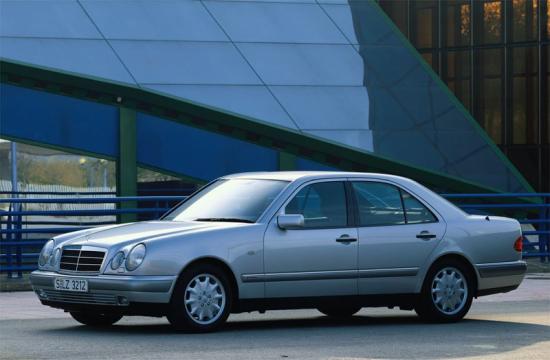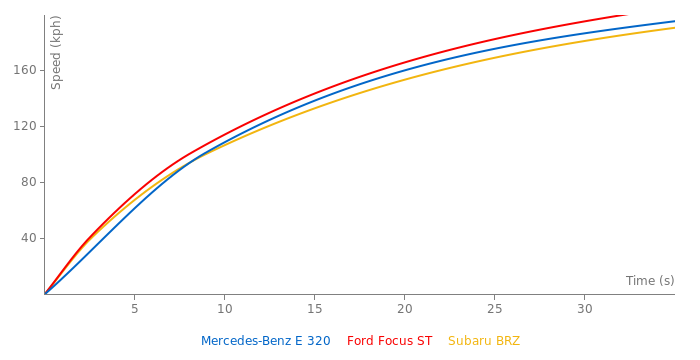One of the last I6 Mercedeses. The successor of this engine (V6, 3.2 l, 18 valves) is only 4 PS stronger and has the same torque. In my opinion the late 90's and the first half of the 2000's were the darkest time for the Mercedes petrol engines. The V6, 18 valves engines which replaced the I6, 24 valves engines weren't stronger and according to a lot of tests and user reviews they also weren't more economical than the older I6's and their reliability were much worse than the I6's.

Mercedes-Benz E 320 specs
| Car type | 4-door saloon |
| Curb weight | 1500-1611 kg (3307-3552 lbs) |
| Dimensions | 4.80 m (189 in) long |
| Introduced | 1995 |
| Origin country | Germany |
| Gas mileage | 16.5-9.2 l/100 km (14-26 mpg US / 17-31 mpg UK) |
| Views | 6.7k |
Performance
| 0 - 60 kph | 3.2 s |
| 0 - 80 kph | 5.0 s |
| 0 - 100 kph | 7.2 s |
| 0 - 120 kph | 10.2 s |
| 0 - 140 kph | 13.6 s |
| 0 - 160 kph | 18.0 s |
| 0 - 180 kph | 24.3 s |
| 0 - 200 kph | 33.0 s |
| 1000 m | 27.8 s |
| Est. 1/8 mile | 10.9 s @ 78.3 mph |
| Est. 1/4 mile | 17.1 s @ 98.8 mph |
| Est. 1/2 mile | 26.3 s @ 115.6 mph |
| Top speed | 242 kph (150 mph) |
| 100 kph - 0 | 39 m (129 ft) |

Powertrain specs
| Engine type | Inline 6, 24v |
| Displacement | 3.2 l (195 ci) |
| Power | 220 ps (217 bhp / 162 kw) @ 5500 rpm |
| Torque | 315 Nm (232 lb-ft) @ 3850 rpm |
| Power / liter | 69 ps (68 hp) |
| Power / weight | 142 ps (140 bhp) / t |
| Torque / weight | 202 Nm (149 lb-ft) / t |
| Efficiency | 17 PS per l/100 km |
| Transmission | 5 |
| Layout | front engine, rear wheel drive |